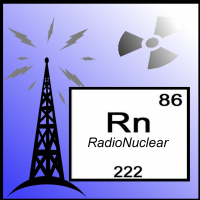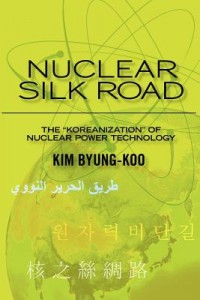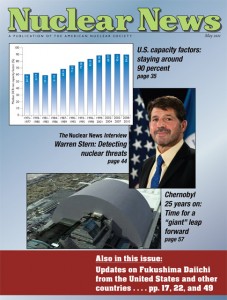YouTube video: Facts are on nuclear’s side

Climate activists rarely mention nuclear power as a tool in the battle against climate change, consumer reporter John Stossel comments during the video "The Nuclear Option" on his YouTube channel.


Climate activists rarely mention nuclear power as a tool in the battle against climate change, consumer reporter John Stossel comments during the video "The Nuclear Option" on his YouTube channel.

Ukraine’s State Nuclear Regulatory Inspectorate (SNRIU) has authorized the operation of Chernobyl’s Interim Storage Facility (ISF-2), allowing spent nuclear fuel from the plant’s three undamaged reactors to be loaded into the dry storage facility. The handover of the ISF-2 operating license was carried out during a ceremony held on April 26, the 35th anniversary of the Chernobyl accident, and was attended by Ukraine’s president, Volodymyr Zelensky.

An atomic safety and licensing board has been established to address a hearing request filed on behalf of an antinuclear group regarding the subsequent license renewal (SLR) application for NextEra Energy’s Point Beach reactors, located near Two Rivers, Wis. The Nuclear Regulatory Commission published notice of the panel’s formation in the April 2 Federal Register.

Rowlatt
Following U.K. Prime Minister Boris Johnson’s recent restatement of the United Kingdom’s commitment to nuclear power, BBC News chief environment correspondent, Justin Rowlatt, wrote an article aimed at separating fact from fiction regarding the safety and benefits of nuclear energy.
Among his points, Rowlatt defended the use of nuclear power to combat climate change, examined the data behind deaths from radiation exposure directly caused by the Chernobyl and Fukushima accidents, and explained that exposure to low levels of radiation is not a major health risk.
The Bulletin of the Atomic Scientists (BAS) is currently featuring on its website a series of five articles by young American and Russian scholars on nuclear safety, with a focus on the industry’s three major accidents: Three Mile Island, Chernobyl, and Fukushima.
In one of those articles, “Don’t let nuclear accidents scare you away from nuclear power,” the authors conclude that “even after accounting for both the immediate and long-term toll of the three accidents, nuclear power has a remarkably safe track record compared to coal, natural gas, and even hydroelectric power.”
Philippine President Rodrigo Duterte on July 24 signed an executive order that calls for a study to determine the feasibility of introducing nuclear energy into the country’s power generation mix. Citing “the experience of a number of countries” showing nuclear power to be “a reliable, cost-competitive, and environment-friendly energy source,” the order creates the Nuclear Energy Program Inter-Agency Committee (NEP-IAC) to carry out the work.
A forest fire near the Chernobyl site had no effect on radiation levels in the exclusion and evacuation zones around the site, according to the State Emergency Service of Ukraine (SESU) on April 8. The “equivalent dose rates of gamma radiation did not change,” SESU stated.
SESU’s statement came three days after Egor Firsov, the head of Ukraine’s ecological inspection service, wrote in an online post, “There is bad news---in the center of the fire, radiation is above normal.” On a video that accompanied the post, Firsov displayed a Geiger counter that showed elevated levels of radiation.
I just knew it! I was hoping I'd be wrong, that HBO would have the courage and integrity to do their homework and consult even one actual nuclear scientist or radiobiologist. Or even just read the United Nations Chernobyl Forum Report, the best source of information on the disaster for non-nuclear people.
Episode 22 of RadioNuclear is now available. In this episode, we discuss the recent miniseries "Chernobyl", which recently concluded on HBO. We debunk some of the more egregious articles written in the wake of the show (see links to these articles below). We also discuss good ways to engage with individuals who are captivated with the show, and not necessarily familiar with nuclear technology.
 Welcome to the New Year! Even though I am on the road, there is just so much happening lately in nuclear I could not pass up the opportunity to talk about it! This episode of RadioNuclear, we take a look at recent and exciting legislation and policy for advanced nuclear. This includes the passages of the NEIMA and NEICA bills and what the Idaho National Laboratory may look like in the coming years. We also discuss the NRC's recent decision on post Fukushima regulation. Lastly, we look on how you can adopt a dog from the Chernobyl exclusion zone. No, I am not making that up!
Welcome to the New Year! Even though I am on the road, there is just so much happening lately in nuclear I could not pass up the opportunity to talk about it! This episode of RadioNuclear, we take a look at recent and exciting legislation and policy for advanced nuclear. This includes the passages of the NEIMA and NEICA bills and what the Idaho National Laboratory may look like in the coming years. We also discuss the NRC's recent decision on post Fukushima regulation. Lastly, we look on how you can adopt a dog from the Chernobyl exclusion zone. No, I am not making that up!

Courtesy SSE ChNPP.
In the administration building of the Chernobyl nuclear power plant, a number of stained glass windows (as seen to the right) recall the optimistic tone of industrial Soviet-era art that can still be viewed today at power plants around the former USSR. That these are well preserved is not the result of a specific effort, but instead because of the essential abandonment of large parts of the facility, and even the entire region, after the most serious nuclear reactor accident in 1986 in history.
![tr-senate[1]](https://cdn.ans.org/cafe/2011/08/tr-senate16.jpg)
Rockwell
Facts vs. myths about the health effects of Fukushima and Chernobyl. The conclusions of scientists studying health consequences may be startling to those exposed only to commonly held beliefs and traditional media (and Chernobyl Diaries!)
 As part of the team that supported the startup of Yonggwang-3 and -4 (South Korea's first nuclear units, built in a technology transfer program with Combustion Engineering), I thought it long overdue to see a book that chronicled South Korea's journey from an impoverished nation to one of the world's leading players in the nuclear industry (e.g., South Korea has 21 operating reactors versus Germany's 17).
As part of the team that supported the startup of Yonggwang-3 and -4 (South Korea's first nuclear units, built in a technology transfer program with Combustion Engineering), I thought it long overdue to see a book that chronicled South Korea's journey from an impoverished nation to one of the world's leading players in the nuclear industry (e.g., South Korea has 21 operating reactors versus Germany's 17).
The discovery of fire a million years ago must have been terrifying to cave men and women. Since that time, many people have died and much damage to the earth has occurred as a result of chemical energy released through fire. Nevertheless, that chemical energy found its place in the world, providing great benefits, and most people take it for granted.
 The hard-copy May issue of Nuclear News will soon be in the hands of American Nuclear Society members. It will also be available electronically to members.
The hard-copy May issue of Nuclear News will soon be in the hands of American Nuclear Society members. It will also be available electronically to members.
Now that the recent events at the nuclear plants at Fukushima are largely behind us and the stabilization is underway, we look to the 25th anniversary of Chernobyl and recognize that comparisons are inevitable. But it's vital that we keep these events in perspective as we face the challenges of developing our energy resources for our global future.
There are many facets of my chosen avocation as a pro-nuclear blogger and podcaster, but one aspect that has been prominent during the 25 days since the Japanese earthquake, tsunami, and nuclear nightmare at Fukushima has been that of atomic educator. Following the role model of my favorite teachers, I have worked hard to maintain a two-way flow of information-successful educators have to be open-minded learners. There is no doubt that I know a lot more about the design and operation of boiling water reactors with MK I containment vessels now than I knew four weeks ago.
 At a session on educational programs during a recent ANS meeting, a fairly new graduate student in nuclear engineering described a nuclear survey course that he had taken at his university. The graduate student had not studied nuclear engineering as an undergrad, and when he said, "I had never really heard of Chernobyl before I took this course," you could almost hear an audible gasp among the more, well, mature members of the audience.
At a session on educational programs during a recent ANS meeting, a fairly new graduate student in nuclear engineering described a nuclear survey course that he had taken at his university. The graduate student had not studied nuclear engineering as an undergrad, and when he said, "I had never really heard of Chernobyl before I took this course," you could almost hear an audible gasp among the more, well, mature members of the audience.